 1984 Renault Espace I (J11/13) Dimensions, Size & Specs
1984 Renault Espace I (J11/13) Dimensions, Size & SpecsMeasurements of the 1984 Renault Espace I, engineered for optimal performance and comfort
| Dimensions | |
|---|---|
| Length: | 4250 mm167.3 in13.9 ft |
| Width: | 1770-1777 mm69.7-70.0 in5.8-5.8 ft |
| Height: | 1660 mm65.4 in5.4 ft |
| Ground Clearance: | 150 mm5.9 in0.5 ft |
| Trunk Capacity: | 580 liter20.5 cu ft |
| Trunk Capacity (Max): | 3060 liter108.1 cu ft |
| Weight Specifications | |
| Curb Weight: | 1200-1240 kg2646-2734 lbs |
| Maximal permitted Weight: | 1800-1900 kg3968-4189 lbs |
| Roof Load: | 70 kg154 lbs |
| Tire Specifications | |
| Rims Sizes: |
|
| Tire Sizes: |
|
The Renault Espace I (J11/13), produced from 1984 to 1988, was a pioneering minivan that helped shape the modern MPV market. With a length of 4250 mm (167.3 inches), a width ranging between 1770 and 1777 mm (69.7–70 inches), and a height of 1660 mm (65.4 inches), the Espace I combined a compact footprint with spacious interior versatility. Weighing between 1200 and 1240 kg (2645–2734 lbs) in curb weight, and capable of handling a maximum weight between 1800 and 1900 kg (3968–4189 lbs), it was designed to balance passenger comfort with practical load capacity.
One of the key features of the Espace I is its generous luggage capacity: 580 liters (20.5 cubic feet) with all seats in use, expandable dramatically to 3060 liters (108 cubic feet) with the rear seats folded down, making it highly practical for family trips or cargo transport. The vehicle's roof could support an additional 70 kg (154 lbs) of load, enabling further cargo versatility. Its ground clearance stood at 150 mm (5.9 inches), offering a moderate ride height suitable for urban and suburban driving.
Equipped with 13- or 14-inch rims, it used tire sizes of 185/70 R13 or 195/65 R14, balancing handling performance with comfort. The Renault Espace I was a trailblazer in combining a spacious interior with manageable exterior dimensions, setting a standard that many future minivan designs would follow. Its production period marked Renault’s commitment to innovation in family-oriented vehicles, emphasizing modular space and usability.
Discover the standout features that make the 1984 Renault Espace I a leader in its class
Have a question? Please check our knowledgebase first.
The Renault Espace I (J11/13), produced between 1984 and 1988, measures 4250 mm in length (approximately 167.3 inches) and has a width ranging from 1770 mm to 1777 mm (about 69.7 to 70.0 inches). These dimensions made it one of the pioneering large family minivans of its time, offering ample space for passengers while still being manageable in typical urban and suburban environments.
The Renault Espace I (J11/13) stands at a height of 1660 mm (approximately 65.4 inches). It features a ride height or ground clearance of 150 mm (about 5.9 inches), which strikes a balance between comfortable cabin height and practical driving over most road surfaces. This height was designed to facilitate easy entry and exit for passengers while maintaining stable driving dynamics.
The curb weight of the Renault Espace I ranges from 1200 kg to 1240 kg (approximately 2645 to 2734 pounds), depending on specific trim and equipment. Its maximum permissible weight is between 1800 kg and 1900 kg (around 3968 to 4189 pounds). This weight capacity allows for a fully loaded vehicle with passengers and cargo, making it both practical and versatile for families and group transport.
The Renault Espace I offers 580 liters (about 20.5 cubic feet) of luggage capacity behind the rear seats, providing generous space for everyday luggage and shopping. When the rear seats are folded down, this capacity expands dramatically to 3060 liters (around 108 cubic feet), transforming the minivan into a versatile cargo carrier suitable for carrying bulky items or large quantities of goods.
With a length of 4250 mm (167.3 inches), a width maxing out at 1777 mm (70 inches), and a height of 1660 mm (65.4 inches), the Renault Espace I typically fits comfortably into the majority of standard residential garages, which are typically about 2.4 to 2.7 meters wide (94.5 to 106 inches) and 4.8 to 6 meters deep (189 to 236 inches). However, depending on the garage interior layout and door width, care should be taken especially with side clearance due to its width just under 1.8 meters.
The Renault Espace I is equipped with rim sizes of 13 or 14 inches, paired with tires sized 185/70 R13 or 195/65 R14. These dimensions provide a balance between ride comfort and road handling appropriate for its role as a family minivan. The relatively tall tire sidewalls help absorb road imperfections, enhancing comfort during longer journeys while maintaining sufficient grip and stability.
As the Renault Espace I marked the introduction of the Espace model in 1984, it didn't have a direct predecessor within Renault's lineup. However, compared to other minivans from the same era, the Espace was relatively light with a curb weight starting at 1200 kg (2645 lbs) and featured relatively compact dimensions for a seven-seater. Its innovative design set new standards in spaciousness and modularity, which many earlier minivans lacked in terms of interior flexibility and overall vehicle packaging.
Compared to contemporary minivans of the mid-1980s, the Renault Espace I stands out for its relatively compact external size — stretching 4.25 meters (167.3 inches) in length, slightly narrower at around 1.77 meters (69.7 inches), but with an efficiently designed interior offering flexible seating for up to seven passengers. Competitors might have been longer or bulkier but often lacked the modular interior concept championed by the Espace. Its significant luggage capacity when seats are folded (up to 3060 liters) was also above average, making it a practical choice for family and leisure use.
The roof load capacity of the Renault Espace I is rated at 70 kg (about 154 lbs). This limit is important for safely mounting roof racks, roof boxes, or transporting additional cargo on the roof without compromising vehicle stability or safety. Consumers should be mindful not to exceed this weight, as overloading the roof can affect center of gravity, fuel economy, and handling, especially given the relatively high profile of the minivan.
Introduced in 1984, the Renault Espace I is widely regarded as one of the pioneering vehicles establishing the modern MPV (multi-purpose vehicle) segment, combining minivan practicality with innovative design. It was among the first European cars to offer modular seating configurations, extensive interior space optimizations, and a unibody construction merging passenger car handling with van-like versatility. This generation laid the foundation for the Espace's long-lasting success, influencing many other manufacturers and shaping how families use cars for travel and daily life.
Discover similar sized cars.

| Model Year: | 2018 |
|---|---|
| Length: | 4220 mm166.1 in |
| Width: | 1695 mm66.7 in |
| Height: | 1620 mm63.8 in |
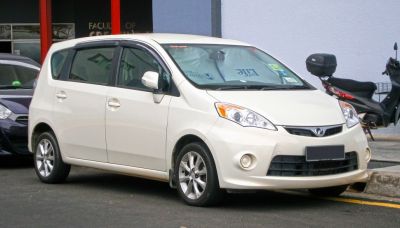
| Production: | 2009-2012 |
|---|---|
| Model Year: | 2009 |
| Length: | 4205 mm165.6 in |
| Width: | 1695 mm66.7 in |
| Height: | 1620 mm63.8 in |
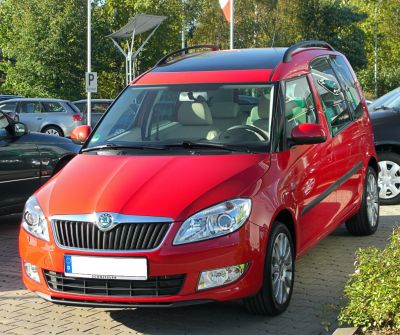
| Production: | 2010-2015 |
|---|---|
| Model Year: | 2010 |
| Length: | 4214 mm165.9 in |
| Width: | 1684 mm66.3 in |
| Height: | 1607 mm63.3 in |
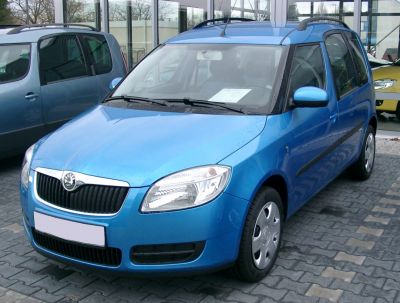
| Production: | 2006-2010 |
|---|---|
| Model Year: | 2006 |
| Length: | 4205 mm165.6 in |
| Width: | 1684 mm66.3 in |
| Height: | 1607 mm63.3 in |
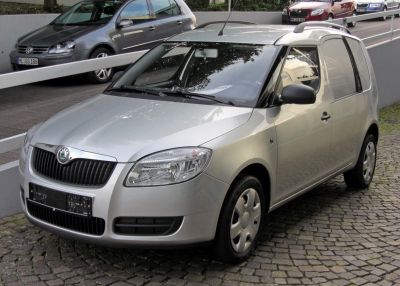
| Production: | 2006-2010 |
|---|---|
| Model Year: | 2006 |
| Length: | 4205 mm165.6 in |
| Width: | 1884 mm74.2 in |
| Height: | 1607 mm63.3 in |
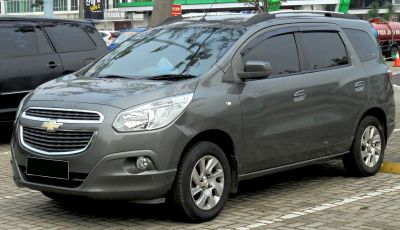
| Production: | 2012-2018 |
|---|---|
| Model Year: | 2012 |
| Length: | 4260 mm167.7 in |
| Width: | 1735 mm68.3 in |
| Height: | 1664 mm65.5 in |
